Wind generators - introduction
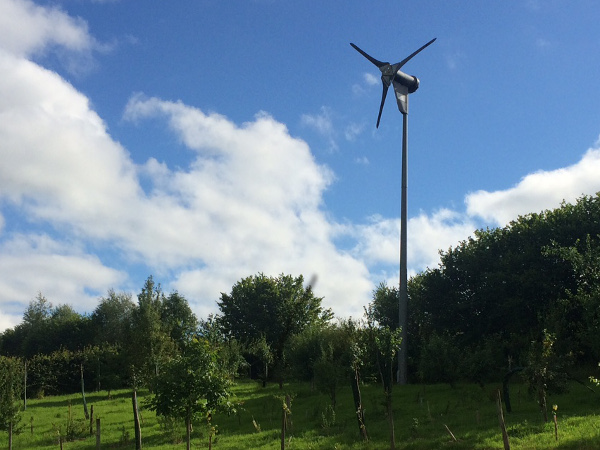
“As yet, the wind is an untamed, and unharnessed force; and quite possibly one of the greatest discoveries hereafter to be made, will be the taming, and harnessing of it.” – Abraham Lincoln
Contents
What are wind generators?
Wind generators are devices that produce electricity from the power of the wind. Inside the body of a generator, there is a magnet that rotates inside a coil of wire, which produces an electric current in the wire – a little bit like a dynamo on a bicycle, but with the wind providing the movement, not your legs.

Diagram of the wiring of a domestic wind and solar electrical generation system with battery bank.
Wind generators come in many sizes and shapes, from small units found on caravans and boats to enormous machines that can power a whole village. Wind farms have many generators which produce a large amount of power. In the UK there are large wind farms in Wales, Cornwall, Yorkshire, Northern Ireland, Scotland and Cumbria. Some people object to wind generators on the grounds that they can be noisy and may be thought to spoil a beautiful view. Recently, wind farm planners and engineers have improved the noise problem considerably. Many people living near wind farms have no problem with their appearance, especially when you consider that they are producing electricity without burning fossil fuels.
Part 1 in a series of videos about repairing a Proven wind turbine.
Perhaps the ultimate solution is to put wind generators offshore, where winds are strong and there are no neighbours. The UK now has several offshore wind farms, with more in the pipeline. The main drawback is the cost of building in a harsh environment.
The UK has the best wind resource in Europe; we currently produce less than 1% of our energy from the wind, but the potential could be as high as 20%.
What are the benefits of wind generators?
Wind generators are the main viable alternative to fossil fuels and nuclear power in the UK: as such, wind power has the potential to replace currently existing generating technologies which cause a wide range of environmental problems. Wind power does not contribute in use to climate change or acid rain, and does not create a hazardous waste storage problem.

Poorly-positioned wind turbine.
Wind generators have a good energy ratio: they generate many times the energy needed to make them. Also, it is easy to decommission wind power installations; most of the materials are easily recyclable using existing technologies.
Greater use of wind power means less dependency on remote fuel sources, with the problems of transport and military involvement that brings.
Wind power is suitable for small installations, unlike many other generation technologies that are only viable on a large scale.

Diagram of the wiring of a grid-tied domestic wind and solar electrical generation system.
Safety and reliability are good – a properly installed wind generator will operate without problems for 20 years or more, and there is no record of any member of the public ever being harmed by an operational wind turbine.
Some people oppose wind turbines because they can cause bird deaths – it’s estimated that wind turbines kill between 20k and half a million birds in the US every year (see this table). However, fossil fuel power plants kill around 14 million (and over 20 times the number of deaths per unit of electricity generated); pesticides, 72 million; hunting, over 100 million; buildings, at least 300 million; and cats, probably 1-2 billion. So it’s good to get things in perspective. We can and should keep turbines away from major migration routes, but climate change is going to cause more harm to birds, and to nature generally, than wind turbines ever could.
The blades being lifted onto a large, community-owned turbine in Wales.
What can I do?
It’s a good idea to combine wind with solar, to take advantage of all weather conditions (plus the wind blows at night) to provide all, or contribute to, your energy needs. If you want to provide all your needs, the first task is to reduce energy use and become more energy efficient, otherwise it will be quite expensive. Wind generators are ideal for boats and caravans though, where less electricity is needed, and also for remote, off-grid homes, in combination with a diesel generator – especially if heating is solid fuel, and cooking is with bottled gas.

6 kilowatt grid-tie inverter (right) and turbine controller (left).
Check the wind speeds for your location, or monitor them yourself with an anemometer, then look at graphs provided by manufacturers for their turbines to see what power (in Watts) you will get for your average windspeed. Divide by 1000 to get kW, and multiply by the number of hours in a year (8760) to find the kWh generated per year (a kWh is a unit of electricity and can be found on your electricity bill).
For example, a small turbine costing around £700 (not including batteries, mast, regulator or inverter) will provide around 300 kWh per year. An average family in the UK uses between 3-4,000 kWh per year, so this generator will only contribute a little of that.
Installing a wind turbine on a farm in Northern Ireland.
When checking manufacturers’ graphs, bear in mind that they may use knots. A knot is around 0.5m/s. Talk to your local planners (for a small turbine, this shouldn’t be a problem), and choose a site away from trees and buildings (rural areas are much better sites for wind generators).
It’s not a good idea to mount turbines on buildings. The turbulence is terrible close to buildings and the noise transmitted through the structure is unacceptable. It’s essential to mount a turbine at least 6 metres above any obstruction within a 100-metre radius of the tower. If the site is wrong and for various reasons the output will be low, or if it’s too close to neighbours, then it’s probably not a good idea. If the site is right but you have close neighbours then go for a small unit that is unobtrusive but on a tall tower.

Well-positioned wind turbine.
Decide whether you will use a battery bank, or be grid connected (in effect using the grid as a store instead of batteries). There are environmental problems in the manufacture and disposal of batteries, but you will be autonomous, and power cuts won’t affect you. There is a third way, called grid interface. Batteries are used but the grid kicks in via a transfer switch if the batteries get low. You can slowly add more wind and solar to reduce the need for grid power.
There is much more involved than this for a domestic installation – for example, upwind or downwind turbines, battery care, tower types, charge controllers, inverters, electrical components – details of which can be found in our publication, Wind & Solar Electricity.

There are courses, like this one at V3 Power, where you can learn to build your own turbine.
You can buy 12-volt domestic appliances, in which case you just need batteries and a regulator, or you can use normal 240v appliances, but you’ll need an inverter too. You can self-install or you can employ a professional. If you can’t install your own turbine, you can support wind power by switching to a green supplier.
Finally, it’s possible to build your own turbine – search online for courses and/or get this manual, but this is only for the enthusiast – if you want to contribute to reducing carbon emissions whilst powering your home efficiently, it’s best to go for an off-the-shelf device.
A look at how a combination of wind and solar can contribute to domestic electricity needs on the shortest day of the year.
There are currently no government financial incentives for new installations of renewable electricity generation.
Specialist(s)
The specialist(s) below will respond to queries on this topic. Please comment in the box at the bottom of the page.
 Andy Reynolds is a carpenter / joiner and woodsman who has tutored courses and authored books with us. He has lived on a smallholding in Lincolnshire since the early 80s, renovated a house, built a holiday cottage and got off-grid. He records his adventures with educational videos on his YouTube channel.
Andy Reynolds is a carpenter / joiner and woodsman who has tutored courses and authored books with us. He has lived on a smallholding in Lincolnshire since the early 80s, renovated a house, built a holiday cottage and got off-grid. He records his adventures with educational videos on his YouTube channel.


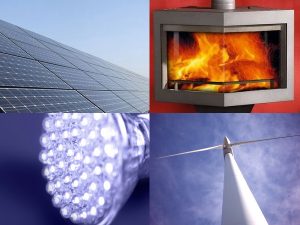
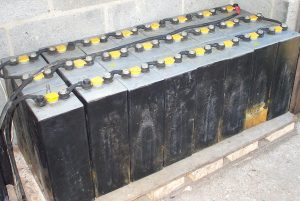
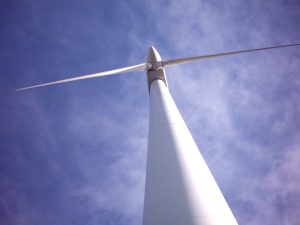
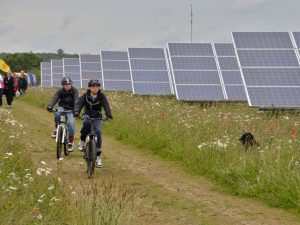
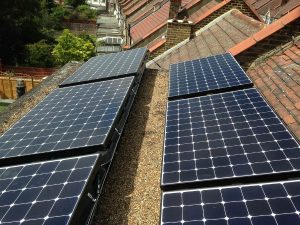
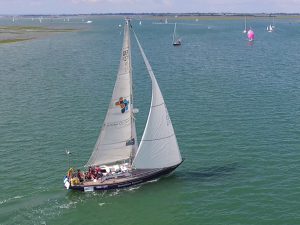
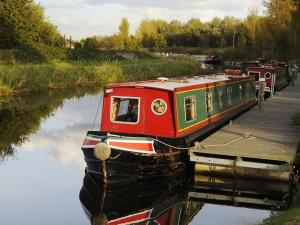
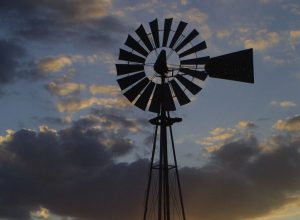
6 Comments
Hi,
I am from an organisation called the nomadic community gardens. We transform meanwhile spaces into gardens and urban oases for the local community. We currently have a site in east London which is powered by generators. We have the skills available to us in order to install a wind energy system but not the funds needed to buy all of the equipment. Is there any help that we can get that will help us to fund the project?
Thanks for sharing this comprehensive article on wind energy. Getting off grid is what we want, but the investment can seem overwhelming and beyond our reach. The combination of wind and solar is an encouraging combination. Do you know where we can get information on planning permission for erecting turbines?
Hi – you could post something on our planning permission page – https://www.lowimpact.org/lowimpact-topic/0-planning-permission/. Cheers
Hi
Thanks for all of the information on this website. I am building an of grid cabin in Cornwall and i am looking to add a wind turbine to my solar panels. I have been looking for some answers to questions i have but cannot find anything. Would anyone be able to help me?
Many many thanks
Alban
Hi Alban. That’s what this comments section is for. If you’re looking for someone to give you more detailed consultancy, you might find someone here too – or look under ‘resources’ for products & service or course providers.
Alban – also, our Wind & Solar Electricity book might be good for you – https://www.lowimpact.org/categories/wind-generators/books